In the following report, you'll discover what factors impact survey completion rates. We will show you the statistics for completed surveys and those from abandoned ones. It will give you a comprehensive perspective on when the survey completion rate starts to drop.

What Data Did We Consider?
The following report is based on data collected between September 21, 2019, and January 21, 2020.
We've analyzed 267,564 responses from surveys conducted by our customers using Survicate. The report contains findings from multiple types of surveys, including email surveys, mobile surveys, targeted web surveys, link surveys, NPS, and CSAT.
The data is not limited to any specific sector.
FURTHER READING:
- Email Surveys: How to Send, Questions & Types (All-in Guide)
- Mobile App Survey: Complete Guide with Question Examples
- What is Net Promoter Score? 2021 Guide to Top NPS Surveys
Key Completion Rate Findings
There are a few things to keep in mind while carrying out a survey that will prevent you from failure. One of them is ensuring you get a satisfactory survey completion rate and response rate. The lower your completion rate is, the smaller your survey sample, which – in turn – will impact your data's validity.
There is a notable drop in the average completion rate with each additional question:
It probably doesn't come as a surprise that the number of questions asked directly impacts the survey completion rate. The more questions your survey includes, the lower the average completion rate.
- Surveys that included 1-3 questions had an average completion rate of 83.34%.
- The average completion rate drops to 65.15% in 4-8 questions surveys.
- Questionnaires with 9-14 questions have a completion rate of 56.28%.
- While those with 15 questions and more have a completion rate of 41.94%.
The impact of question numbers on survey completion rate
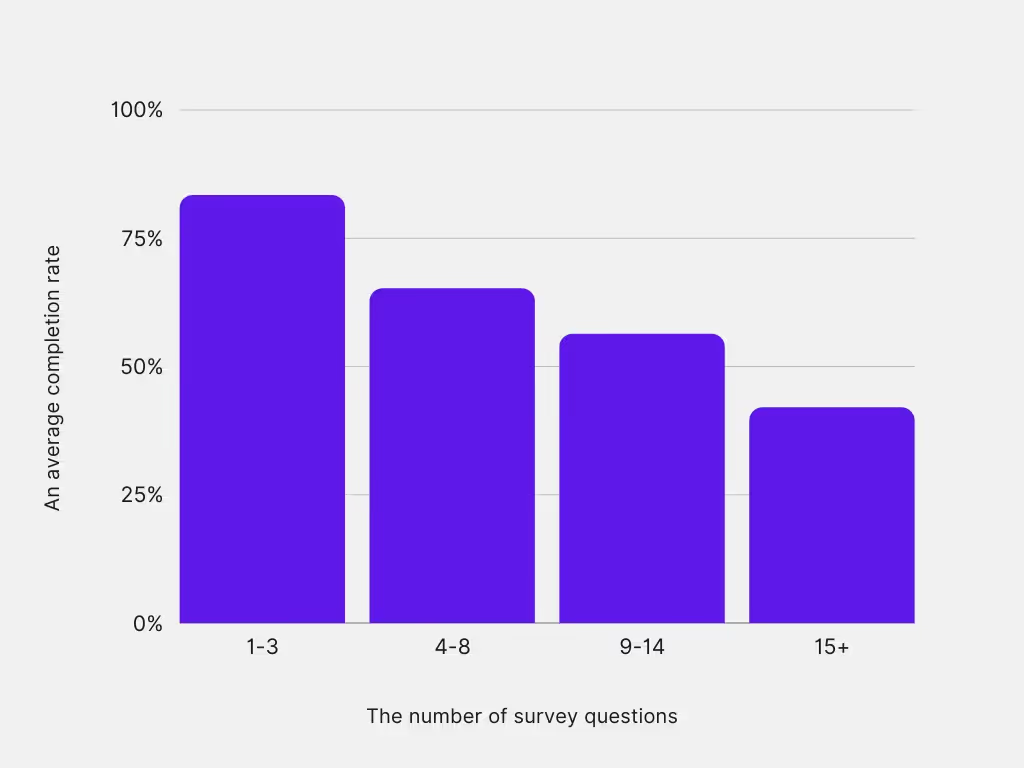
How the average completion rate changes per survey question
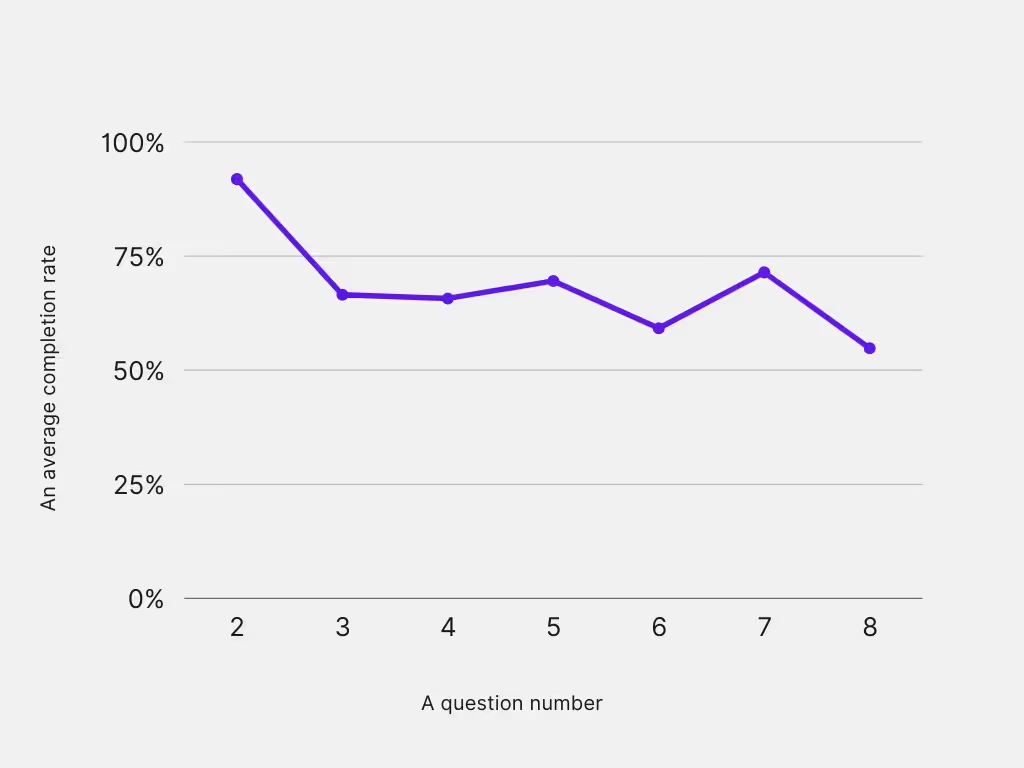
Why is this the case?
1. Survey fatigue
One of the reasons longer surveys have a lower completion rate might be due to survey fatigue. It occurs when a survey respondent becomes tired or bored of answering questions and providing customer feedback. Just like eating too much chocolate can make you sick, answering too many questions can make your customers sick!
2. Timing
That's right – timing is everything. A survey that includes one or two questions can probably be completed in less than a minute. And it's highly probable that your respondent will take the time. Longer surveys are a different story. Your respondent has to be free to answer your questions, and they need to be in the right mindset, as longer surveys require more effort.
Download the full report to discover:
- How open-ended questions impact the completion rate
- What the most effective survey distribution channel is
- How the survey completion rate varies per device
Discover more insights and optimize your surveys.
To try Survicate, simply sign up for our 10-day free trial and get access to all Business plan features today.

.avif)







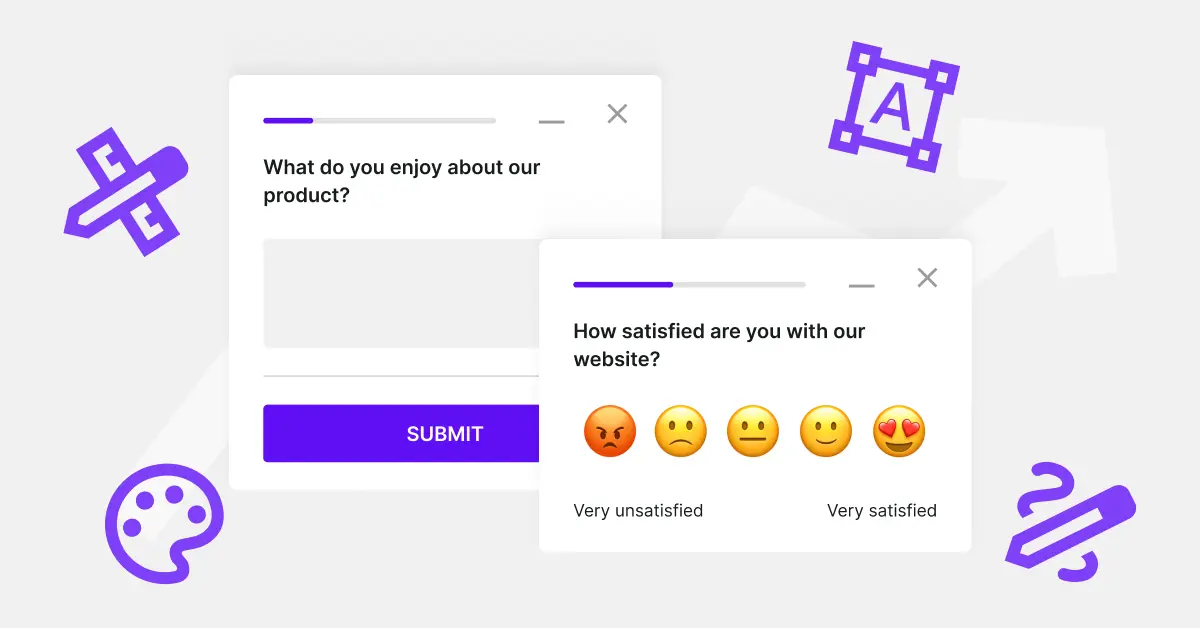
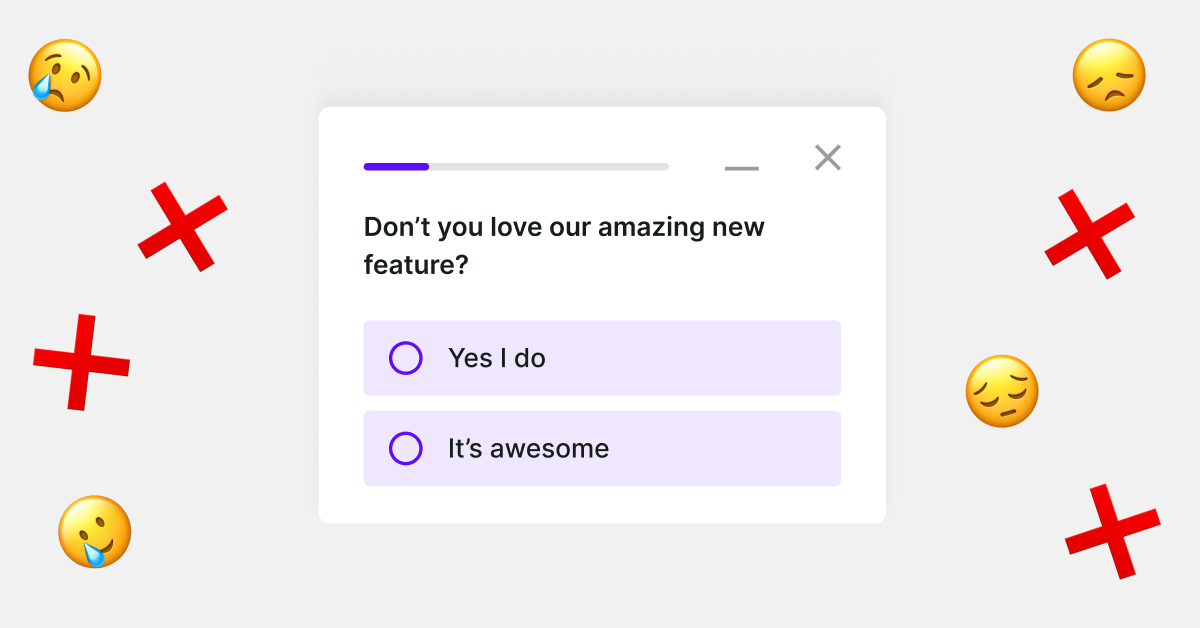
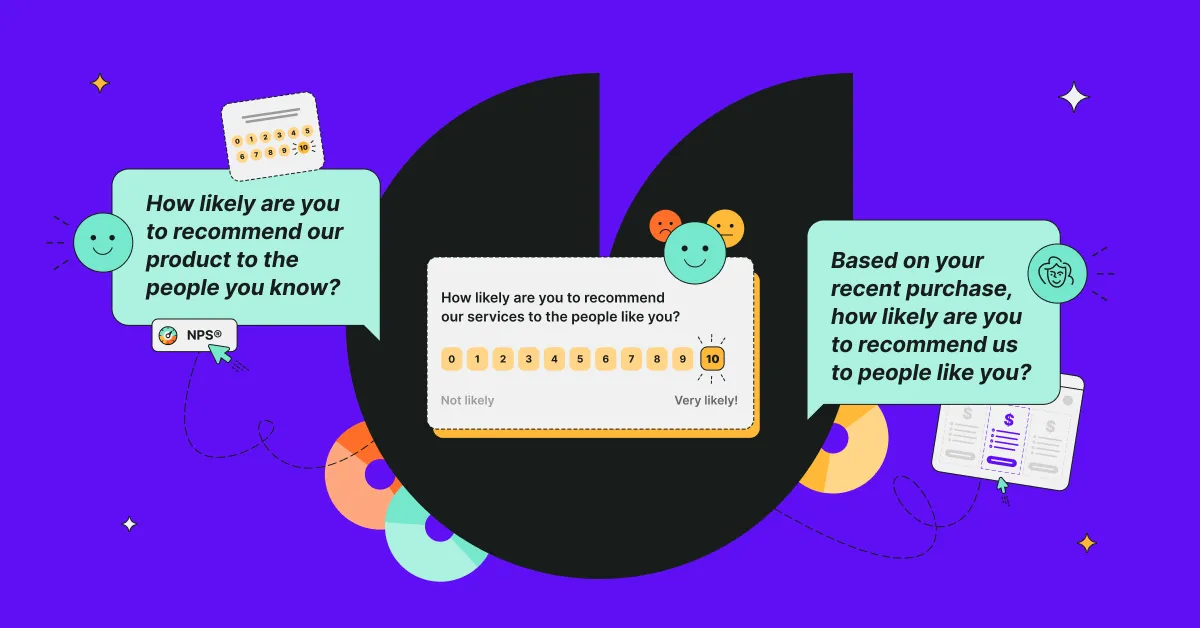
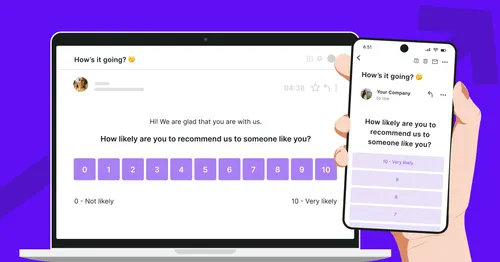
.svg)

.svg)



